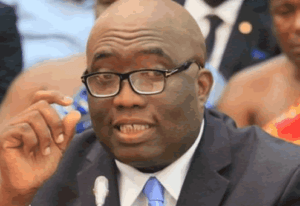UMAT, Railway Ministry signs pact on Railway University

Mr Joe Ghartey, the Minister for Railways Development has hinted of the need to raise the human resource base of the revamped railway sector to make it buoyant in service delivery.
“And this is why I believe the railway training school is critical to building the capacity of staff and interested individuals as we look forward to a more rejuvenated railway where workers would no more live in past glory but present achievements of the sector”.
The Minister of Railway Development made the comments during the signing of a Memorandum of Understanding between the Ministry and the University of Mines and Technology to commence both certificate, diploma and degree programmes beginning 2018/19 academic year.
The MOU is seen as a first step in turning the defunct railway training school into a more vibrant and modern centre of railway engineering courses and ultimately a University of Railways and Infrastructural Development.
The Minister in retrospect mentioned the contribution of the railway sector to the development of the country and noted with regrets how the company’s asset had been sold as scrap by the last half of 2016, railway assets had been sold as scrap, while others built or sell railway property without and fear of patriotism… “These things are done in a manner more akin to scramble of Africa that occurred in the colonial era.”
Mr Ghartey said the reforms in the railway sector currently, should encourage stakeholders to help ensure that the sector was fully revived to play the critical role in economy, cocoa sector and mining development.
“Now, our focus is on centres of economic importance and we are ensuring that railway lines passed through the centres including the Free Zone enclave of Shama and Oppon Manso where there were iron deposits.”
The Minister said the Western Line would be re-designed and extended to Awaso and Nyinahin leading to rich bauxite reserves and also transport cocoa in the northern part of the Western Region, Ashanti and the southern part of the Brong Ahafo Region.
Mr Ghartey added that the rehabilitation of the Western line between Kojokrom and Tarkwa by Ghana Railway Company Limited workers had yielded two results including decrease in derailment and a test run of the passenger train to Tarkwa to Manso, adding that the ballast train went to Tarkwa and Nsuta last week.
“We are at the last stages of negotiations with foreign investors who are interested in completing the new line from Manso to Kumasi and Awaso and hopefully to Nyinahin.
The final designs of the Western Line are being undertaken by Messers Team International from Italy and its about 75 percent completed.” he assured.
The courses to be run from the 2018/19 academic year include; MSc Engineering Management, MSc Business and Technology Management, BSc in Mechanic Engineering, BSc Electrical and Electronics Engineering, BSc Computer Science and Engineering, BSc Environmental and Safety Engineering, BSc Geodetic Engineering, Certificate in Railway Engineering (Plant and Maintenance Option) and Certificate in Railway Engineering (Welding and Fabrication).
It may run courses such as BSc in Railway Engineering, BSc Civil Engineering, BSc Aerospace Engineering, BSc Mechatronic Engineering, BSc Transport Management and Diploma in Electrical Engineering after approval from the National Accreditation Board and National Council for Tertiary Education.
The Vice Chancellor of UMaT, Prof Jerry S.Y. Kuma, said the partnership was a long -term deal to train lower to higher manpower for the railway sector.
“This will be the only railway university in West Africa. This partnership is a serious one and we would carry it to the maximum in terms of the vision of the President to transform this country to become an industrial one and we will do our best to bring the personnel to man all equipment from here to Paga.”
He mentioned that uMAT continued to achieve laurels in the science and technology and it was a plus to nurture the railway training school into becoming a fully-fledged university in the future.
Source: GNA
